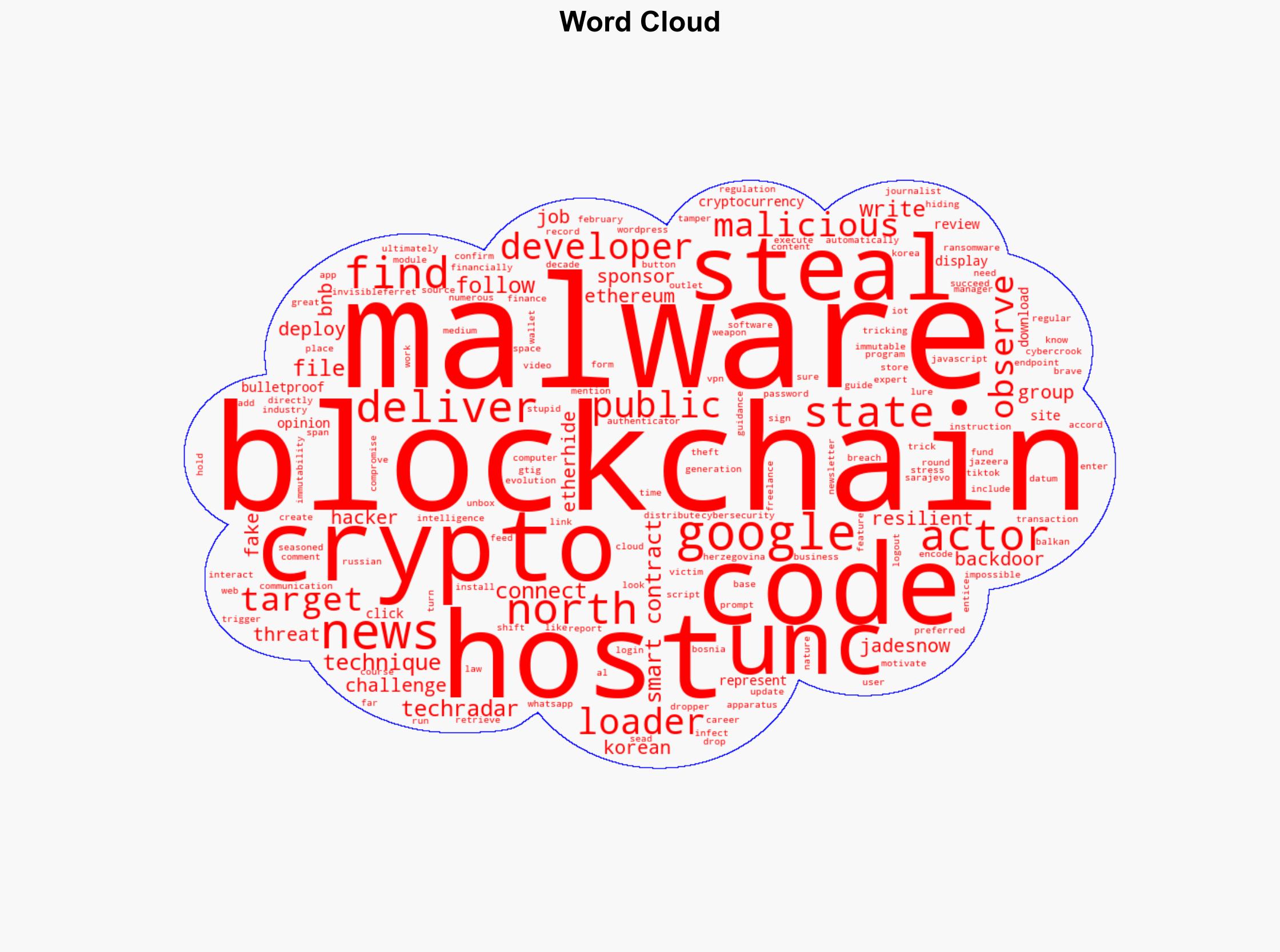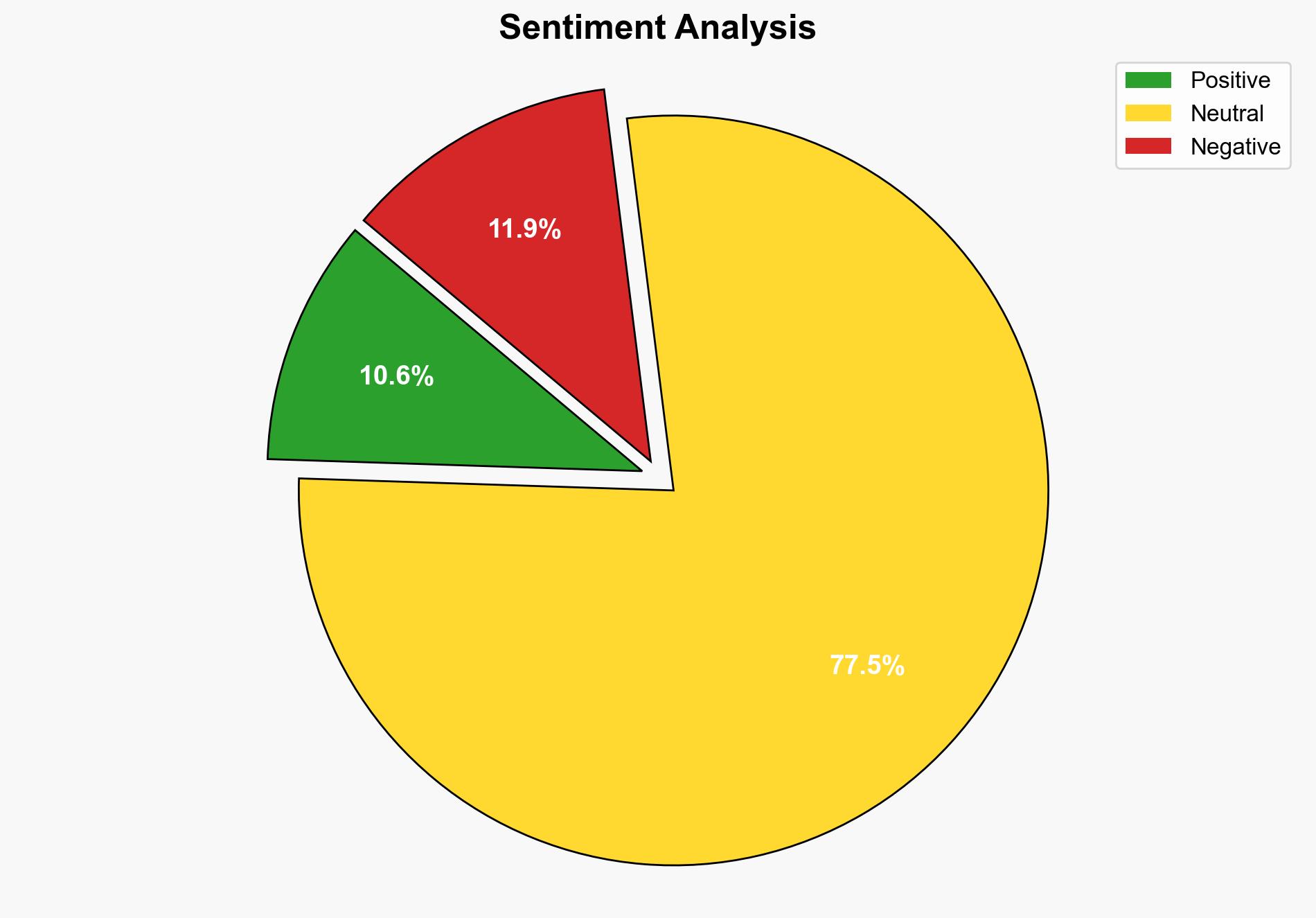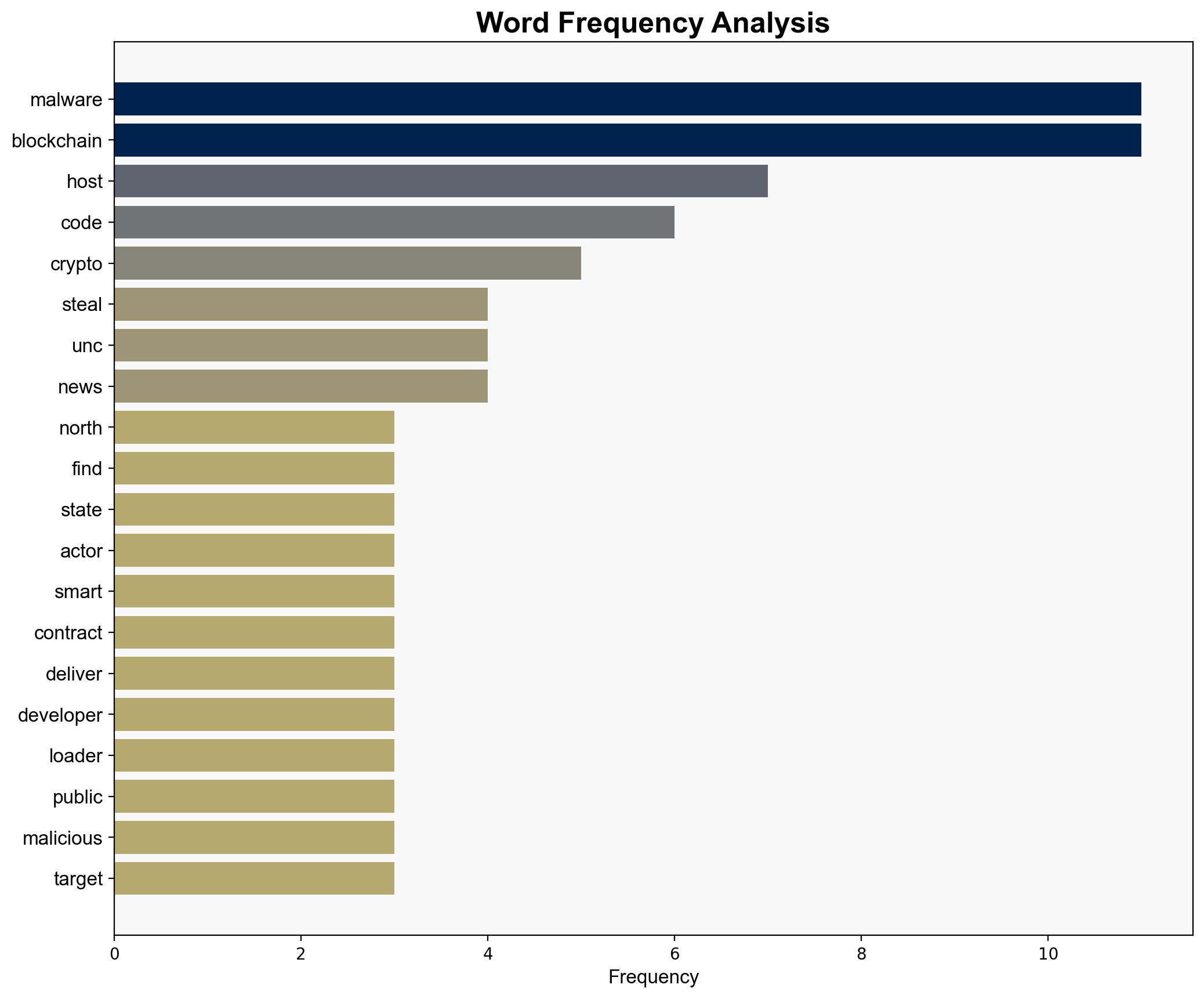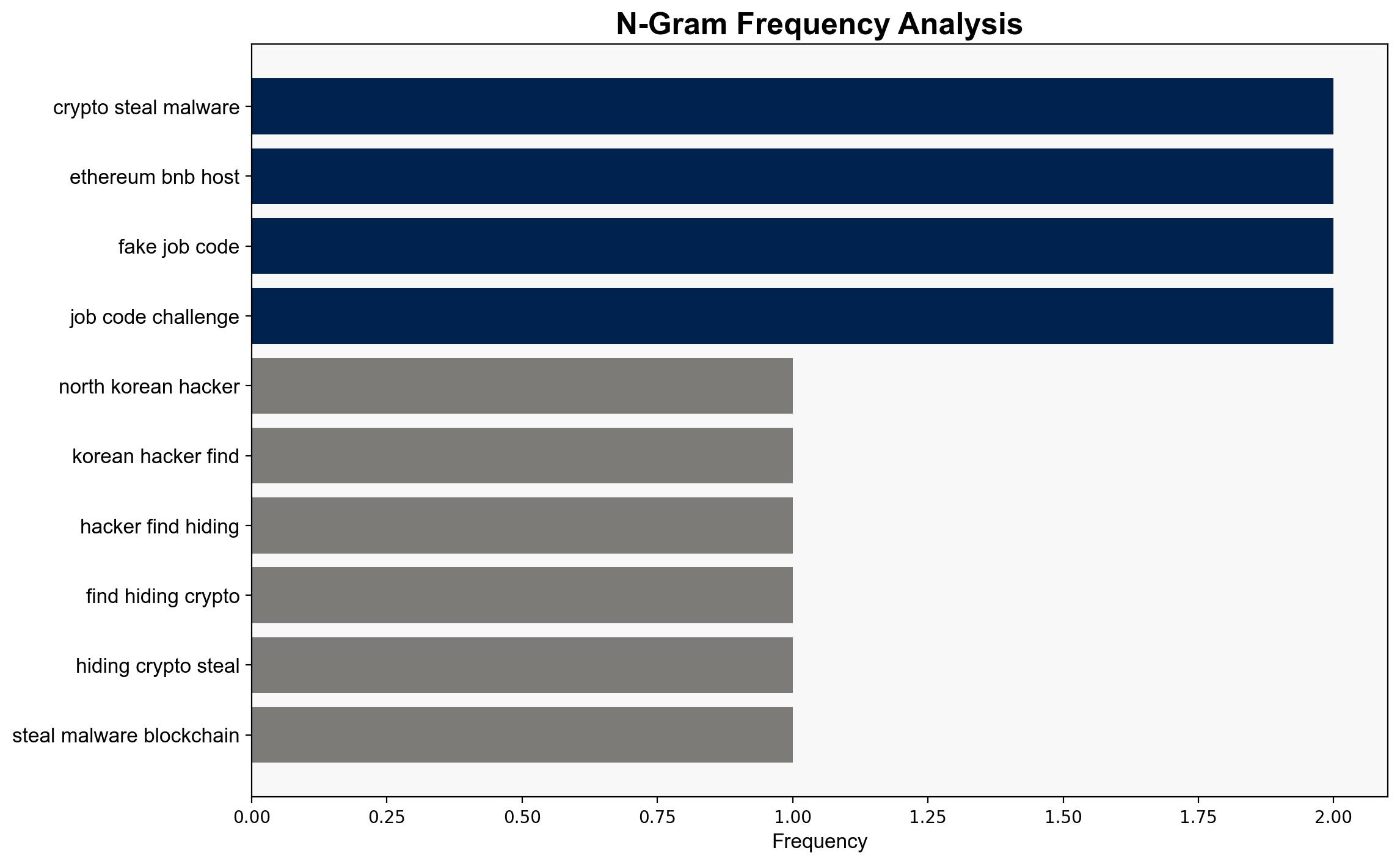North Korean hackers found hiding crypto-stealing malware with Blockchain – TechRadar
Published on: 2025-10-17
Intelligence Report: North Korean hackers found hiding crypto-stealing malware with Blockchain – TechRadar
1. BLUF (Bottom Line Up Front)
The most supported hypothesis is that North Korean state-sponsored actors are leveraging blockchain technology to enhance the resilience and stealth of their cyber operations, specifically targeting the cryptocurrency sector to fund state activities. Confidence level: Moderate. Recommended action: Increase monitoring of blockchain transactions and enhance cybersecurity measures in the cryptocurrency industry.
2. Competing Hypotheses
1. **Hypothesis A**: North Korean state-sponsored actors are using blockchain technology to hide and distribute crypto-stealing malware, aiming to finance state activities through illicit cryptocurrency acquisition.
2. **Hypothesis B**: Independent cybercriminal groups, possibly with indirect links to North Korea, are exploiting blockchain technology for financial gain, with no direct state involvement.
Using ACH 2.0, Hypothesis A is better supported due to the strategic alignment with North Korea’s known objectives of circumventing economic sanctions and funding its regime through cybercrime. The observed use of sophisticated techniques, such as “EtherHide,” aligns with state-level capabilities.
3. Key Assumptions and Red Flags
– **Assumptions**:
– North Korea has the technical capability to develop advanced cyber tools.
– Blockchain’s immutability is being exploited for malware distribution.
– **Red Flags**:
– Lack of direct evidence linking the specific actors to the North Korean state.
– Potential for misattribution due to the anonymity of blockchain transactions.
– **Blind Spots**:
– Limited visibility into the full extent of blockchain-based malware operations.
– Potential underestimation of independent cybercriminal capabilities.
4. Implications and Strategic Risks
The use of blockchain for malware distribution represents a significant evolution in cyber threats, potentially leading to increased difficulty in tracing and mitigating attacks. This could result in more frequent and sophisticated cyberattacks on the cryptocurrency industry, with broader implications for financial stability and cybersecurity. Geopolitically, it may exacerbate tensions related to North Korea’s cyber activities.
5. Recommendations and Outlook
- Enhance blockchain transaction monitoring and develop tools to detect malicious activity.
- Strengthen cybersecurity frameworks within the cryptocurrency sector.
- Scenario Projections:
- Best Case: Improved detection and prevention mechanisms reduce the success of such cyber operations.
- Worst Case: Escalation of cyberattacks leads to significant financial losses and geopolitical tensions.
- Most Likely: Continued use of blockchain by state and non-state actors for cybercrime, necessitating ongoing vigilance and adaptation.
6. Key Individuals and Entities
– No specific individuals are mentioned in the intelligence.
– Entities: North Korean state-sponsored actors, Google Threat Intelligence Group (GTIG), TechRadar.
7. Thematic Tags
national security threats, cybersecurity, counter-terrorism, regional focus





